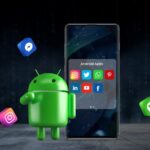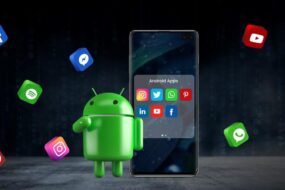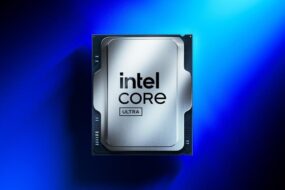
I left Forrester in 2002 and ventured out as an independent analyst. Back then, Intel was the dominant force, overshadowing AMD and Nvidia by a significant margin. Intel’s corporate brand was strong, and the Pentium processor was so iconic that people even wrote songs about it. Qualcomm didn’t even appear on Intel’s radar.
Fast forward 22 years, and Intel is struggling. AMD is now hosting events at the Moscone Center, where Intel once held its grand IDF events. Nvidia has surpassed all competitors, becoming the highest-valued company, and reports suggest that Qualcomm recently considered acquiring Intel.
What went wrong? Simply put, Intel lost its focus and repeated the same mistakes that led to IBM’s downfall in the 1980s.
Let’s dive into how Intel’s trajectory has shifted over the past two decades, examining key missteps and missed opportunities that allowed AMD, Nvidia, and Qualcomm to rise above. We’ll wrap up with my Product of the Week, a new Lenovo laptop featuring Intel’s Lunar Lake Core Ultra 7 processors.
From IBM to Intel
During my time at IBM, I wrote a report out of sheer frustration, watching the company go from being a dominant force to losing its grip on the market.
At IBM, I worked in finance, internal audit, and marketing. I was one of the few who saw the warning signs that IBM’s dominance was slipping. I was told by my VP that “IBM sells the equivalent of air,” implying customers had no other option but to buy from us. Of course, that turned out to be false, and IBM’s customer base began fleeing in large numbers, nearly driving the company to the brink of failure.
In a panic, IBM’s board replaced CEO John Akers with Louis Gerstner, a marketing expert who, despite his lack of technical knowledge, understood that IBM had to fix its image and sales volume to survive. This was similar to Apple’s situation in the late ’90s when Steve Jobs returned to revitalize the company. Apple’s products were underperforming, but Jobs first focused on repairing the brand image before turning to product improvements.
IBM’s recovery under Gerstner was almost miraculous, aided behind the scenes by CFO Jeremy York, who had a role in Apple’s turnaround as well. Gerstner’s marketing efforts were so successful that they arguably rivaled the best in the business. But this momentum slowed when York left, and it ground to a halt when Sam Palmisano, who succeeded Gerstner, decided that marketing was no longer a priority, undermining much of the work done.
In the 1990s, Intel thrived under the leadership of Dennis Carter and Andy Grove. The company was a marketing juggernaut and outpaced its competitors by a wide margin. However, after their retirements, Intel began to take its leadership for granted. Marketing budgets shrank, and the company went through a series of CEOs, each with their own vision but little consistency. Brian Krzanich’s tenure was particularly damaging, as he focused on chasing Qualcomm’s smartphone market at the expense of Intel’s core products.
Meanwhile, AMD stayed focused with consistent leadership, particularly under Lisa Su, who honed her skills at IBM. Qualcomm capitalized on its smartphone success to push into the PC market, and Nvidia made a long-term bet on AI, which many considered a far-off trend at the time. The loss of Intel’s CTO, Justin Rattner, only added to the company’s struggles, leaving Intel blind to the potential of AI.
Intel’s failure to take on Qualcomm, driven in part by pressure from Apple, revealed its vulnerability. The company’s marketing and execution were no longer what they used to be, making its leadership appear weak and reactive rather than strategic.
In the end, Intel had no defense against the erosion of its brand, losing its position of market leadership and allowing competitors to outpace it.
AI’s Rise: A Long-Awaited Revolution
The rise of AI last year was the culmination of two decades of development. Nvidia and IBM were the only companies to make significant investments in AI, though even IBM underestimated how soon the technology would take off. Each successive CEO failed to adequately fund AI efforts despite its growing potential.
Nvidia played a key role in powering OpenAI, and Microsoft’s adoption of ChatGPT, branded as Copilot, mirrors its earlier strategy with Spyglass, the company’s initial attempt to challenge Netscape Navigator. Nvidia helped create the AI wave and benefited from it, with AMD quickly following suit. Today, companies like Microsoft and Google now view AMD’s AI solutions as direct competitors to Nvidia’s. As Nvidia struggles to keep up with skyrocketing demand, AMD is benefiting from increased visibility and growing revenue.
Meanwhile, Qualcomm partnered with Microsoft to create an AI platform for PCs, boasting impressive performance and long battery life. AMD swiftly responded with its own solution that competes well with Qualcomm’s offering, largely due to the absence of the need for an x86 emulator.
Intel, however, missed the AI revolution. When Microsoft requested a Neural Processing Unit (NPU), Intel pushed back, rather than stepping up. While Intel has made strides with its Lunar Lake technology, it is a premium product, and the company won’t have a competitive mainstream NPU for at least another year.
Currently, AI desktop implementations remain limited, with NPUs absent from workstations, gaming PCs, and desktops. This gives Intel some time to catch up, but the company’s lack of marketing prevents it from properly pitching its technology, causing it to lose market share.
Despite still leading in market share, Intel now finds itself in the position that AMD once occupied—chasing competitors like AMD, Nvidia, and Qualcomm rather than asserting its leadership.
Had Intel maintained the strong marketing team it had under Dennis Carter, it could have followed the examples of IBM under Louis Gerstner and Apple under Steve Jobs. By defending its brand and slowing market erosion, Intel could have bought itself time until it delivered a competitive solution. As capable as Lunar Lake is, it lacks the broad reach to carry the load alone, and without robust marketing, its potential will likely go unrealized.
The Perils of Underfunding Marketing
A conversation I had at IBM has stayed with me for decades because it’s an issue tech companies repeatedly face: they often fail to listen to their customers. As Steve Jobs once said, customers don’t always know what they want. This is why companies must follow Jobs’ example, positioning their products against customer needs that they don’t yet realize they have. This skill of shaping demand is what effective marketing is all about.
Take the iPhone, for example. It was based on the LG Prada phone, which failed because consumers disliked virtual keyboards, preferring the physical ones offered by Microsoft, Palm, and Blackberry. But Apple succeeded by convincing the market that its virtual keyboard design was superior, leveraging entertainment features to sell the device. Competitors failed to defend their positions, allowing Apple to redefine the smartphone market and ending the era of devices with physical keyboards.
The repeated mistake is the under-resourcing of marketing and taking customers for granted. Interestingly, it was only IBM under Louis Gerstner that recognized the importance of marketing, which helped lead to its recovery. However, after Gerstner, IBM forgot the lesson, and we’re seeing the same trend today with Intel, as it faces competition from AMD, Nvidia, and Qualcomm.
This mirrors past industry shifts, such as IBM vs. Sun, Netscape vs. Microsoft, Palm/Nokia/Microsoft/Blackberry vs. Apple, and now Intel vs. its competitors. When the once-dominant company fails to protect its image of success with strong marketing, leadership inevitably shifts.







